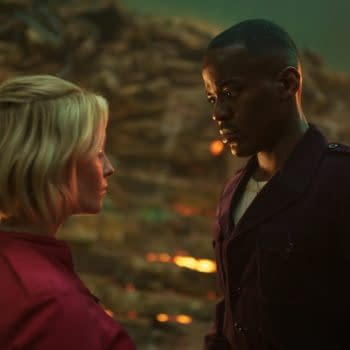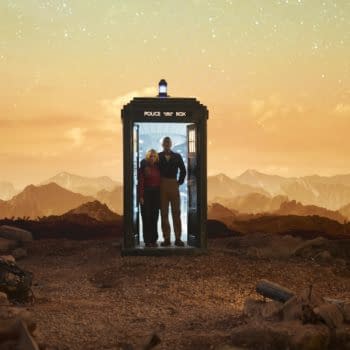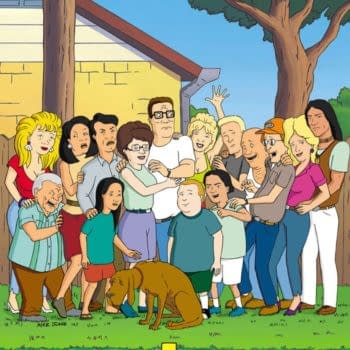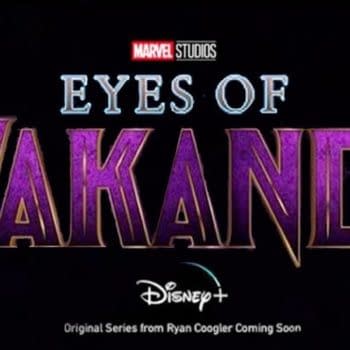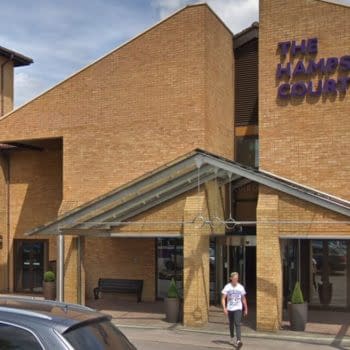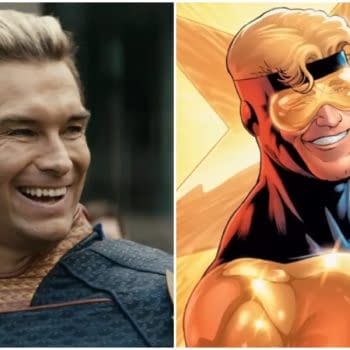Posted in: BBC, Disney XD, Doctor Who, TV | Tagged: bbc, disney, doctor who, Millie Gibson, Ncuti Gatwa, russell t davies
Doctor Who: "The Devil's Chord" Goes Meta, Lots to Sing About (Review)
Doctor Who Episode 2, "The Devil's Chord," is the most meta, fourth-wall-breaking episode in some time - darker, surreal & totally original.
This is a deep dive into "The Devil's Chord," the second episode of the new season of Doctor Who, and you should have watched it before reading this. It is no less crazy than "Space Babies" but gets darker with higher stakes. As I wrote before, everything beyond "The Doctor and Ruby go back to 1963 to meet The Beatles" is a spoiler – so everything from here is a spoiler. This episode makes a good premiere and double bill with "Space Babies", getting darker and more serious after the demented comedy of that former, and more bizarre. The two episodes are the series' new mission statement, declaring it's a very different show from the 1960s or even the 2005 revival to the end of the previous season.
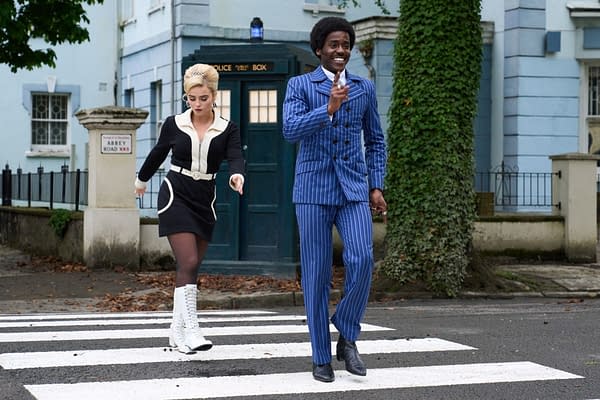
Doctor Who Goes Deeper into Fairy Tale
Doctor Who has always been more Science Fantasy than Science Fiction, but with this new era on Disney+, showrunner Russell T. Davies has opened the show to outright fantasy and stories involving magic. "The Devil's Chord" continues the trend that started in the 60th Anniversary Special "The Giggle," where the Monster of the Week is a child of They Toymaker's, Maestro (Jinkx Monsoon), who might be a monster straight out of Ryan Murphy's R-Rated American Horror Story. Maestro is a god, and gods like them terrify The Doctor because they're capricious and can't be reasoned with. Maestro is the living embodiment of music and greedily eats it from everyone in the world. She is the Devil, the Big Bad Wolf who comes calling – an alpha predator that can warp the laws of Physics and Reality. The irrationality of her existence is what truly scares The Doctor, who has faced all kinds of power-hungry despots, but those have human emotions and motivations. Maestro is all greed and hunger. Jinkx Monsoon plays it camp as tents, funny but also terrifying.
Maestro is summoned by a secret musical chord, which is a magical ritual with nothing to do with Science.
"Oh, Cilla…"
The kick-off for the story is The Doctor and Ruby coming to Abbey Road Studios to witness The Beatles recording their first album, only to discover that reality has been altered and The Beatles sucked. There's a culture-specific in-joke in "The Devil's Chord" that only British viewers will get, which is the cameo by singer Cilla Black (played by Josie Sedgwick-Davies). The Doctor goes to the recording studio down the hall to confirm that Cilla, recording her album, was also singing utter rubbish. Cilla Black really did record in another studio at the same time as The Beatles. She was also from Liverpool and shared Brian Epstein as her manager after John Lennon's aunt told him to introduce her to Epstein. Despite Epstein's efforts, Cilla Black never hit it big in the US but became a popular musical and TV host all the way to her death in 2015.
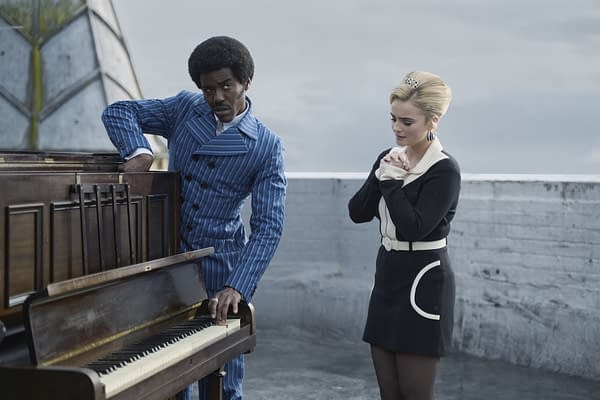
"The Life of Sunday – Ruby's Theme" Becomes Part of the Plot
The Doctor has Ruby play a song she wrote to comfort a friend going through a romantic break-up and broadcast it over the rooftops of London. This is a moment that establishes the unironic romanticism of Doctor Who and the series' new unashamed emotional heart on its sleeve. That song, "The Life of Sunday – Ruby's Theme," is by series composer, the classically trained Murray Gold, of course. It's reminiscent of a Viennese waltz with influences from Beethoven and Mahler. It's melancholy, full of heartbreak and yearning, and opens the hearts of despairing Londoners across the city, reminding them of something they've lost and miss. It's rather unusual for a 19-year-old to write a song like this unless Ruby had a proper and really good music teacher when she was younger.
Oh, and they get a sad old lady killed. Ruby's song inspires her to play "Claire de Lune" on her piano, which summons Maestro, who eats her as the wolf does in "Little Red Riding Hood." Collateral damage has always been a part of Doctor Who. The old lady is played by June Hudson, who was the costume designer for Doctor Who through the 1970s.
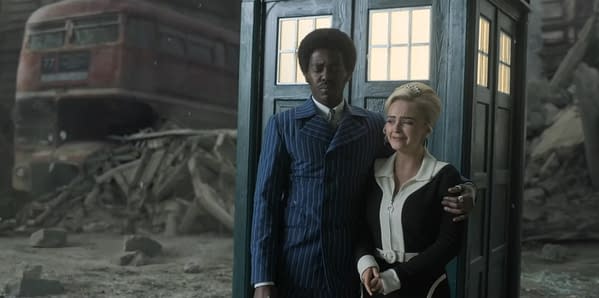
A Callback to The End of the World in "Doctor Who"
The Doctor takes Ruby to an altered future destroyed by Maestro if they don't stop her in 1963. This scene is a callback to the 1970s story "The Pyramids of Mars," where the Fourth Doctor (Tom Baker) takes Sarah Jane (Elizabeth Sladen) to a future destroyed by god-like villain Sutekh if they don't stop him in Edwardian England. This has led fans of the classic series to speculate that the season's Big Bad is Sutekh returning. That might be a bit convoluted since there's no direct clue to Sutekh's presence in the story.
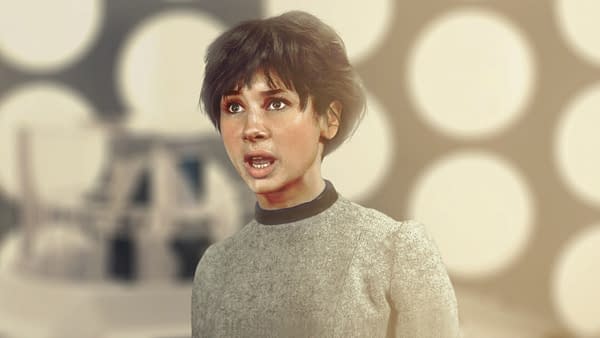
Whatever Happened to The Doctor's Granddaughter?
This is the first time in the new series that The Doctor has mentioned his granddaughter Susan. He left her behind in the 1960s and promised that he would one day come back to see her. He never did. Now, he doesn't know where she is or if she's alive. Susan was played by Carole Ann Ford in the original series in the 1960s. Susan only appeared in the 1984 special "The Five Doctors" when she was snatched out of time for a crossover between The Doctors. Russell T. Davies would not bring her up unless he was planning something. Could she be "The One Who Waits" that the Toymaker and Maestro mentioned? Does she have anything to do with the same woman who keeps popping up in each time period – played by Susan Twist, a character actress whose career spans decades? Susan Twist – real name! – appears as a tea lady here and as a space station staff member in "Space Babies" as well as Isaac Newton's housekeeper in "Wild Blue Yonder" and a heckler at a gig in "The Church on Ruby Road." She's another season-long twist.

A World Without Music is A World Without Joy
The theme of this episode is that Art and Music elevate life, open hearts & minds, and make it worth living. To take away music is to take away joy. Repressed emotions and despair lead to rage can lead to violence, war, death, and extinction. The sadness over the loss of music and self-expression is keenly felt by John Lennon and Paul McCartney, who explode in rage at being reminded. Doctor Who began with the BBC's brief to "educate and inform", and in "The Devil's Chord" is a gateway drug to show kids why music matters. It's no coincidence that Doctor Who at the Proms will be back this year in London. The Proms are an annual series of classical music concerts, and Doctor Who has been used to introduce children to Classical Music via Murray Gold's music for the series. The social commentary here is that a career in Music and the Arts has been a way for working-class people to lift themselves out of poverty and into better lives. Arts education in UK schools has been steadily underfunded and getting slashed by the Tories in the last ten years. This episode could be an advocacy for arts and music education.
Ruby is This Season's "Impossible Girl"
Maestro declares, "There's something very wrong with this creature!" when she tries to eat Ruby and her music. Like Clara (Jenna Colman) during Steven Moffat's run, Ruby's true nature is the season-long mystery the Doctor needs to solve. Let the furious fan speculation begin!
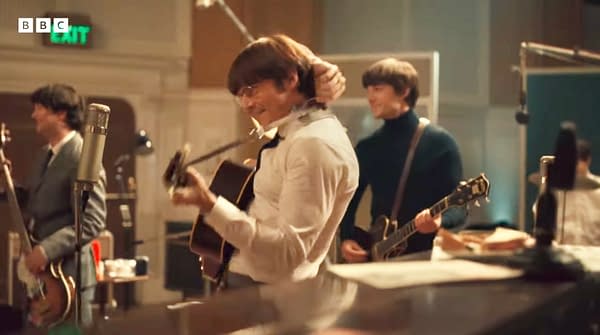
Deus Ex Lennon & McCartney
Maestro said it takes a genius to defeat her, and neither The Doctor nor Ruby are geniuses. The Doctor is only very clever and Ruby is talented but they're not geniuses. No, the musical genius here is the combination of John Lennon and Paul McCartney, whose songs defined The Beatles and The Sixties after all. You can argue about The Rolling Stones being superior, but The Beatles came first. The story lets the historical figures save the day and put everything right.
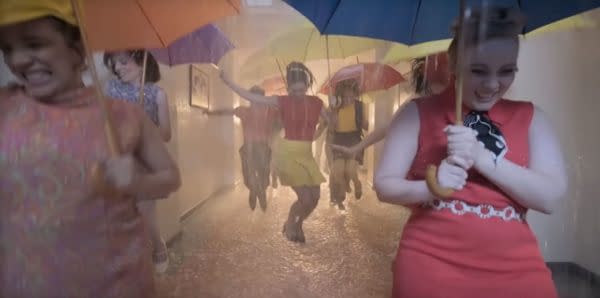
Breaking the Fourth Wall with Glee!
This is the most self-consciously meta episode of Doctor Who ever. Maestro breaks the Fourth Wall and looks at the camera several times, even playing the bars of the show's theme on the piano. The Doctor even winks at the camera at the end when he teases "There's Always a Twist at the End," which is telegraphing the season finale. Then the episode ends with the real song "There's Always a Twist at the End," playing over a technicolor-soaked Frank Tashlin-style musical montage that also pays homage to the movies of Stanley Donen and Singing in the Rain. The Doctor's granddaughter Susan was a fan of that song. Could this be another clue about Susan returning?
And just as I started to wonder where all those dancers and singers came from, including real guests from Strictly Come Dancing, I remembered The Doctor's remark from "The Giggle" that they were still under the effects of "The Giggle" where Reality was malleable, so sure, why not have a joyful Hollywood Music montage to end the show with? Magic means logic is optional! Who cares if it doesn't make sense, especially if it's fun? Doctor Who is Magic now!
Doctor Who is now streaming on Disney+.




